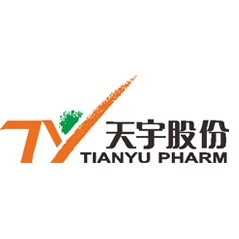Valsartan
Synonymous: | Diovan;Tareg |
CAS: | 137862-53-4 |
Molecular Formula: | C24H29N5O3 |
Molecular Weight: | 435.519 |
Appearance | White crystal or white, off white powder |
Storage | Keep in a cool place away from light |
Category | Drugs for treating hypertension |
Product introduction:
Valsartan is an angiotensin II receptor antagonist antihypertensive drug. It can block the type I (AT1) receptor of angiotensin II, increase the plasma level of angiotensin II, stimulate the unsealed AT2 receptor, and counter the AT1 receptor, so as to expand blood vessels and reduce blood pressure. In the United States, valsartan is a drug used to treat hypertension, congestive heart failure and post myocardial infarction.
Purpose:
Antihypertensive drugs. Valsartan is an angiotensin Ⅱ (Ang Ⅱ) receptor antagonist, which can selectively block the binding of Ang Ⅱ to AT1 receptor (its specific antagonistic effect against AT1 receptor is about 20000 times greater than AT2), so as to inhibit vasoconstriction and aldosterone release and produce antihypertensive effect.
Indication:
Anti hypertension, mild to moderate essential hypertension, especially for secondary hypertension caused by renal damage.
Contraindication:
It is forbidden for those who are allergic to the drug and pregnant and lactating women.
Usage and dosage:
Due to different dosage forms and specifications, please read the drug instructions carefully or follow the doctor's advice.
Adverse reactions:
Headache, dizziness, cough, diarrhea, nausea, abdominal pain, fatigue, etc. Neutropenia can also occur. Occasionally, the indexes of liver function increased.
Matters needing attention:
(1) Angioneuroedema (2) aortic valve or left atrioventricular valve stenosis (3) cholestasis or bile duct obstruction (4) lactation (5) coronary artery disease (6) elderly (7) liver dysfunction (8) hypertrophic cardiomyopathy (9) hyponatremia or reduced blood volume, such as high-dose diuretics (10) unilateral or bilateral renal artery stenosis (11) Surgical patients requiring general anesthesia
Valsartan is a specific angiotensin Ⅱ (AT1) receptor antagonist. It is also a non skin AT1 receptor antagonist after losartan. It plays a key role in regulating systemic blood pressure and maintaining electrolyte and body fluid balance. It selectively acts on AT1 receptor subtypes and blocks the binding of Ang Ⅱ to AT1 receptor (its specific antagonistic effect against AT1 receptor is about 20000 times greater than that of AT2 receptor), thus inhibiting vasoconstriction and aldosterone release, resulting in hypotensive effect, but not inhibiting aldosterone release induced by potassium ion (K +). The antihypertensive effect is superior to enalapril in the treatment of hypertension, mild to moderate essential hypertension, especially for secondary hypertension caused by kidney damage. It can significantly reduce proteinuria in hypertensive patients with normal diabetes or normal renal function, and has the protective effect of promoting uric acid and urinary sodium excretion. It is also suitable for reducing the cardiovascular mortality of high-risk patients (left ventricular failure or left ventricular dysfunction) after heart attack.
IUPAC
(2S)-3-methyl-2-[pentanoyl-[[4-[2-(2H-tetrazol-5-yl)phenyl]phenyl]methyl]amino]butanoic acid
SMILES
CCCCC(=O)N(CC1=CC=C(C=C1)C2=CC=CC=C2C3=NNN=N3)[C@H](C(C)C)C(=O)O



















